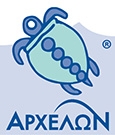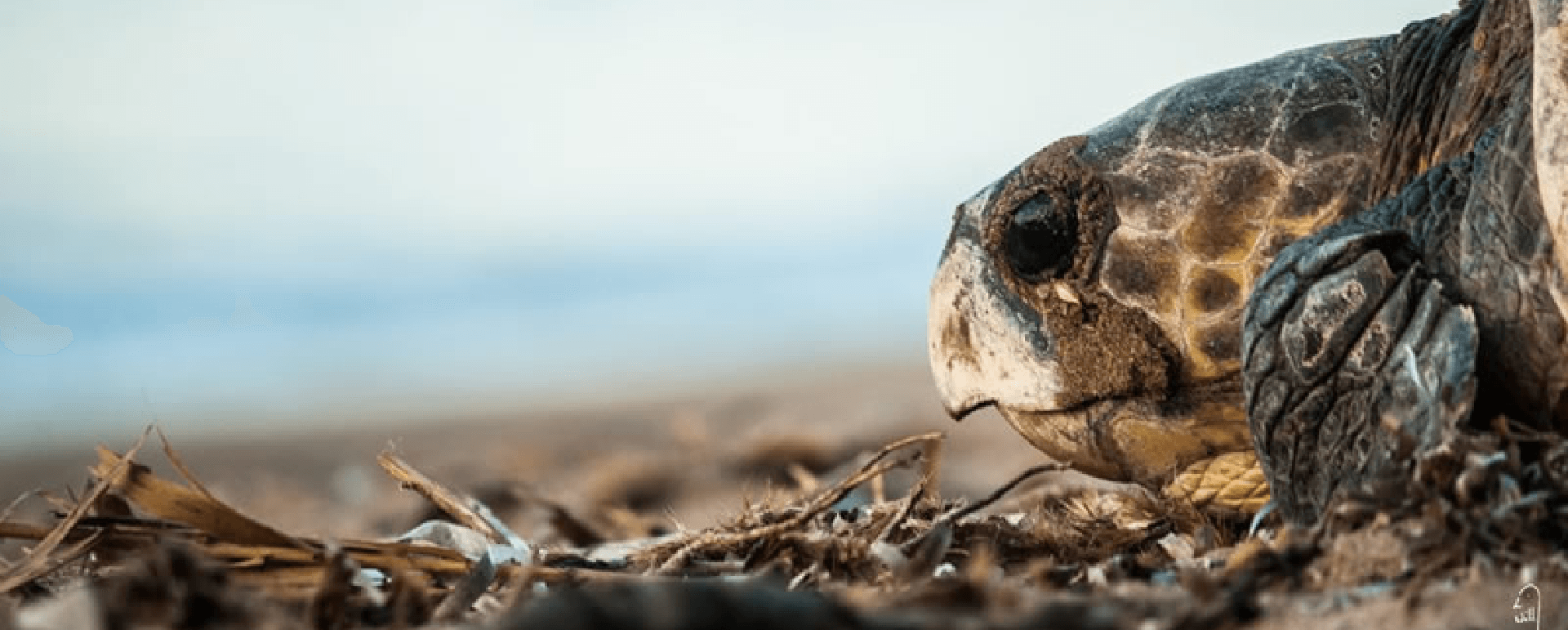ARCHELON is a non-profit organization dedicated to the study and protection of sea turtles and their habitats in Greece.
Its activities combine scientific research with volunteer work and aim to activate society for a better and sustainable planet through education and information dissemination. ARCHELON has been systematically recording the nesting activity of the loggerhead sea turtles and protecting their nests on the most important nesting beaches in Greece, every summer since 1983. As a result, ARCHELON's sea turtle monitoring and conservation projects in Zakynthos and Kyparissia Bay rank among the longest-running in the world. The nationwide Sea Turtle Rescue Network was established by ARCHELON in 1991 and has been recording sea turtle strandings with the help of port authorities and citizens ever since. Established in 1994, the ARCHELON Sea Turtle Rescue Centre in Glyfada receives and treats injured sea turtles and carries out educational activities for thousands of students and visitors every year, highlighting sea turtles as a symbol for the protection of marine biodiversity.
Vision- Mission
There are 7 different sea turtle species in the oceans of the world. Unfortunately, over the last 200 years, humans have made their survival hard. Here is why :
-
Slaughtered for their eggs, meat, skin and shells, sea turtles suffer from poaching and over-exploitation.
-
They are often victims of accidental capture and death in fishing gear.
-
Plastic marine litter affect their health.
-
Tourism has a negative impact on their nesting sites.
-
Climate change is causing global sea level rise so narrow nesting beaches maybe lost under sea water. Also sand temperatures will be altered, affecting the sex of hatchlings.
Because of these, all species of sea turtles are considered conservation dependent. Two species are listed as "Critically Endangered" by IUCN Red List of Threatened Species, while one is listed as "Endangered", three are listed as "Vulnerable" and one as "Data Deficient". Notably these characterisations can be changed in the course of only a few years with notable example that of the Northwest Atlantic leatherbacks whose population went from "Least Concern" to "Endangered" in 6 years.
-
ARCHELON's vision is that these threats are removed and sea turtles continue to exist as part of nature
Threats are removed= humans understand, accept and respect Nature= undisturbed ecosystems, high quality of cultural landscapes.
ARCHELON designs and implements projects and actions for the conservation of sea turtles and their habitats, combining scientific work with volunteering service and aiming at mobilizing society through awareness and education for a better and sustainable planet.
We can all live together, this is the motto of ARCHELON since 1983!
Our People
The Board
- President: Thomas Arapis
- Vice-President: Dimitris Dimopoulos
- Treasurer: Giorgos Valais
- Secretary: Lenio Margaritouli
- Advisor: Rania Spyropoulou
- Advisor: Alexis Sachinides
- Advisor: Giorgos Chiras
Assistant Committee: Mariana Dimitriou, Olga Dretakis, Alexandros Dritsoulas
- Director
Daphne Mavrogiorgos
T: 2105231342 - Research Coordinator
- Legal & Statutory Issues Coordinator
- Rescue Centre Officer
- Rehabilitation & Welfare Officer
- Rehabilitation Assistant
- Veterinarian
Νoi Psaroudaki
E: noipsaroudaki@gmail.com - Field Projects Coordinator
- Project manager for west Peloponnese (Kyparissia Bay)
- Project Manager for South Peloponnese (Lakonikos Bay & Koroni)
- Project Manager for Zakynthos
- Project Manager for Rethymno and Messara
- Project Manager for Chania
- Volunteers Officer & ESC Coordinator
- Education Officer
- Education Assistant
Elisavet Machaira
T: 2108982600 - Communications Officer
- Public Awareness Officer
- Financial Monitoring Officer
- Accounting Officer
- Accounting Assistant
How it started
Once upon a time...
In the summer of 1977, Dimitris Margaritoulis, Anna and their children, while on vacation in Zakynthos, they noticed for the first time some strange tracks in the sand. Until then there was no scientific record on sea turtle nesting in Greece. In 1984 the dedicated volunteers of the Association for the Protection of the Sea Turtles began the annual monitoring and protection of nests in Zakynthos and in Kyparissia Bay. The methodical work, love and respect for the environment of the first "turtlers", paved the way and made Loggerheads a symbol for the protection of nature in Greece.
Thanks to the will, the persistence, the patience, the influence, the contribution of so many people and our good luck, ARCHELON made it to here and it seems we are continuing the journey even further. We continue with respect to each other, devotion and responsibility, based on the knowledge and experience gained. Sea turtles are our starting point and direction and through them we come to touch the many social and environmental challenges of the world. Let’s try to answer this: who would we be without ARCHELON?

